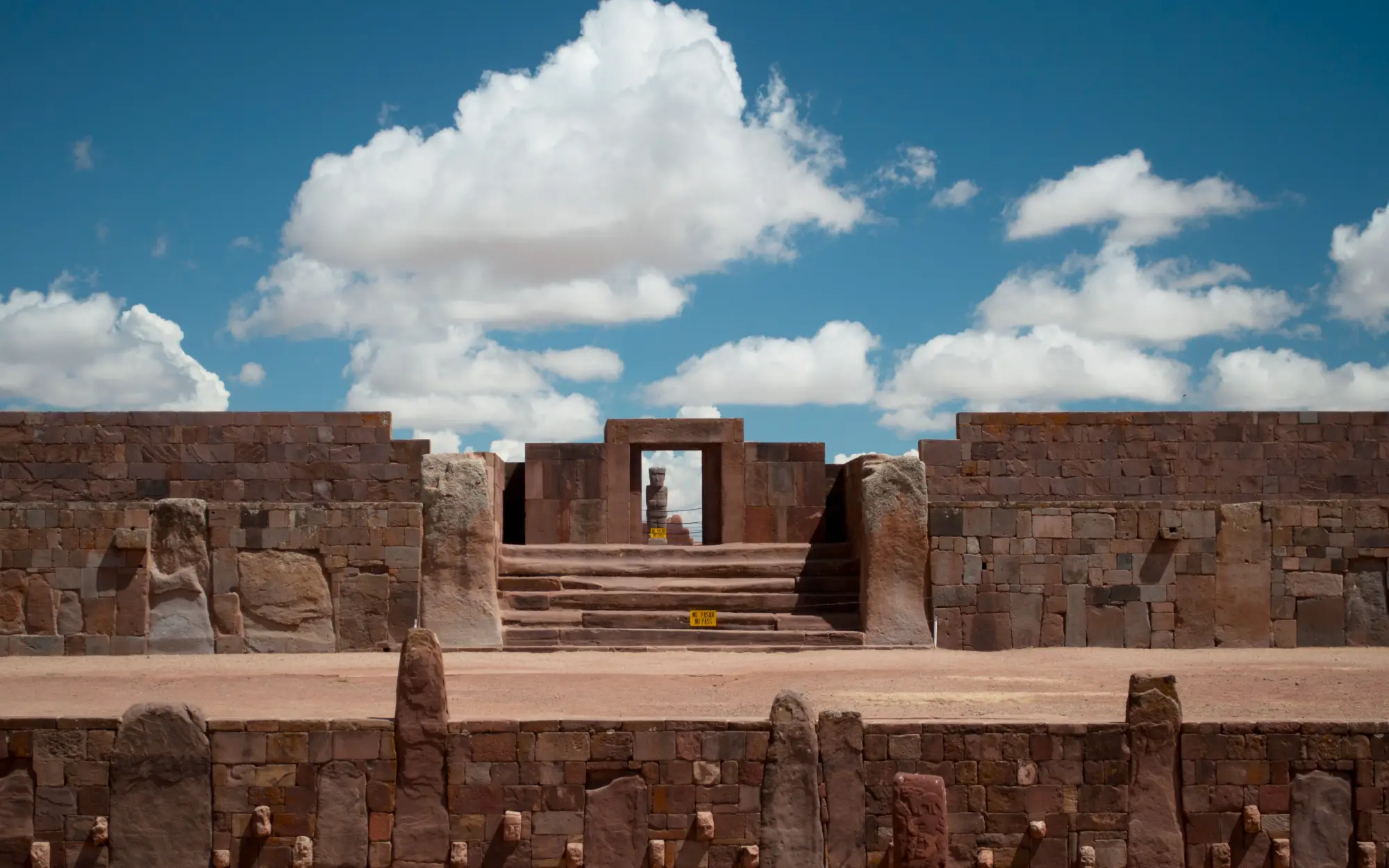
The amazing ruins of Tiwanaku
The Tiwanaku ruins are the most important and best preserved in all of Bolivia, and correspond to the largest and oldest culture in America, the Tiahuanacota people. This ancient civilization spanned 25 centuries, roughly from 1500BC to 1000AD.
Its extension covered what is now Bolivia, northern Argentina and Chile to the Atacama desert. It is estimated that around the year 800 AD, when it reached its maximum splendor, it had a population of between 10,000 and 20,000 people.
Located more than 3,800 meters above sea level, Tiwanaku had a port and was situated on the shores of Lake Titicaca, although the continuous retreat of the body of water today leaves the ruins several kilometers inland.
The ancient city is characterized by its architecture decorated with reliefs and incised plans placed on steles, and is made up of seven important architectural constructions: Kalasasaya, semi-subterranean temple, Akapana pyramid, Puerta del Sol, Puerta de la Luna, Puma Punku and temple, also great pyramids and sculptures.
Its construction characteristics are unique and splendid, that with a unique drawing of simple lines, lavish temples were designed by assembling finely cut blocks using metal staples, with surface and underground networks of channels to eliminate rainwater and sewage.
With its impressive examples of decorated ceramics, monumental structures and megalithic blocks, the center of the Tiahuanaco culture is one of the great attractions of the Andean country.

Heads in the Semi-Subterranean Temple.
The Regional Museum of Archeology of Tiwanaku exhibits part of an important collection obtained from the same site, appreciating beautiful pieces of ceramics, lithics, metal, artifacts made of bone and human remains that were rescued through different scientific excavations in the area.
The site was the center of the aforementioned Tiahuanacota civilization, a pre-Inca culture that based its economy on agriculture, livestock and architecture, and radiated its technological and religious influence towards other civilizations contemporary to it.
The magnificence of its culture is expressed in its excellent ceramic work, as well as in textiles and, above all, in architectural constructions, many of which have astronomical orientation. This culture is also characterized by having known and worked with bronze, giving it a great technological and military advantage over the other cultures of America at the time.
Tiwanaku was first recorded in written history in the 16th century, suffering numerous looting and informal investigations ever since. Its detailed archaeological study would not begin until the mid-19th and early 20th centuries, beginning its restoration and protection in the 1960s.
This ancient civic and sacred site was declared a World Heritage Site by the UNESCO in 2000. Unesco and is currently home to one of the most important ceremonies of the Aymara New Year.
Welcome to Bolivia!
Share this Sight with: